Urban development was mainly about mass housing in the 1960s and 1970s Budapest. Huge housing estates have grown out of the ground, providing tens of thousands of people with more comfortable living conditions than ever before.
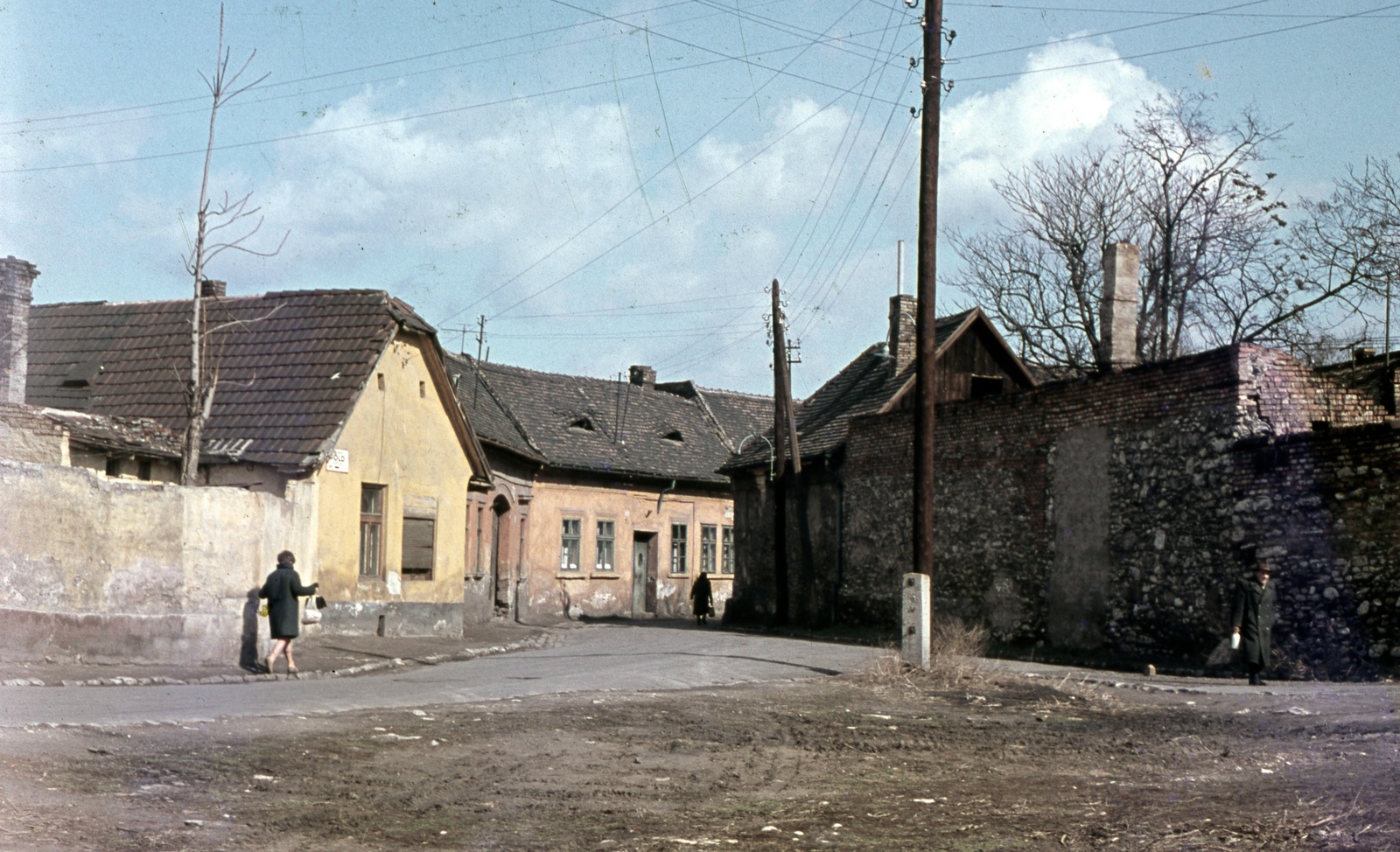 Föld Street in Óbuda from Gyűrű Street towards Flórián Square in 1968 (Source: Fortepan/No.: 70094)
Föld Street in Óbuda from Gyűrű Street towards Flórián Square in 1968 (Source: Fortepan/No.: 70094)
There was a need for various shops, services for household appliances, and laundry in the housing estates in addition to the many new flats but the construction of these services was usually delayed. Namely, under socialism, the shops were also built according to plans, as the private sector was not or hardly present in commerce. Urban planners at the time envisioned serving the needs of people living in modern housing estates in large centres, for which they also gave an exact ratio: 1,225 square metres of retail floor space were “given” to 1,000 homes.
Along this idea came the plan for constructing the Flórián shopping centre in the heart of Óbuda in the early 1970s. The surrounding housing estate was built between 1968 and 1976, changing the image of the district. However, Flórián was not only sized for this housing estate; its job was to serve the whole of North Buda.
The new 19,000 square metre store was designed by Sándor Törőcsik, an employee of LAKÓTERV. In his day, he envisioned a modern department store with 25 different shops and a comfortable air-conditioned interior.
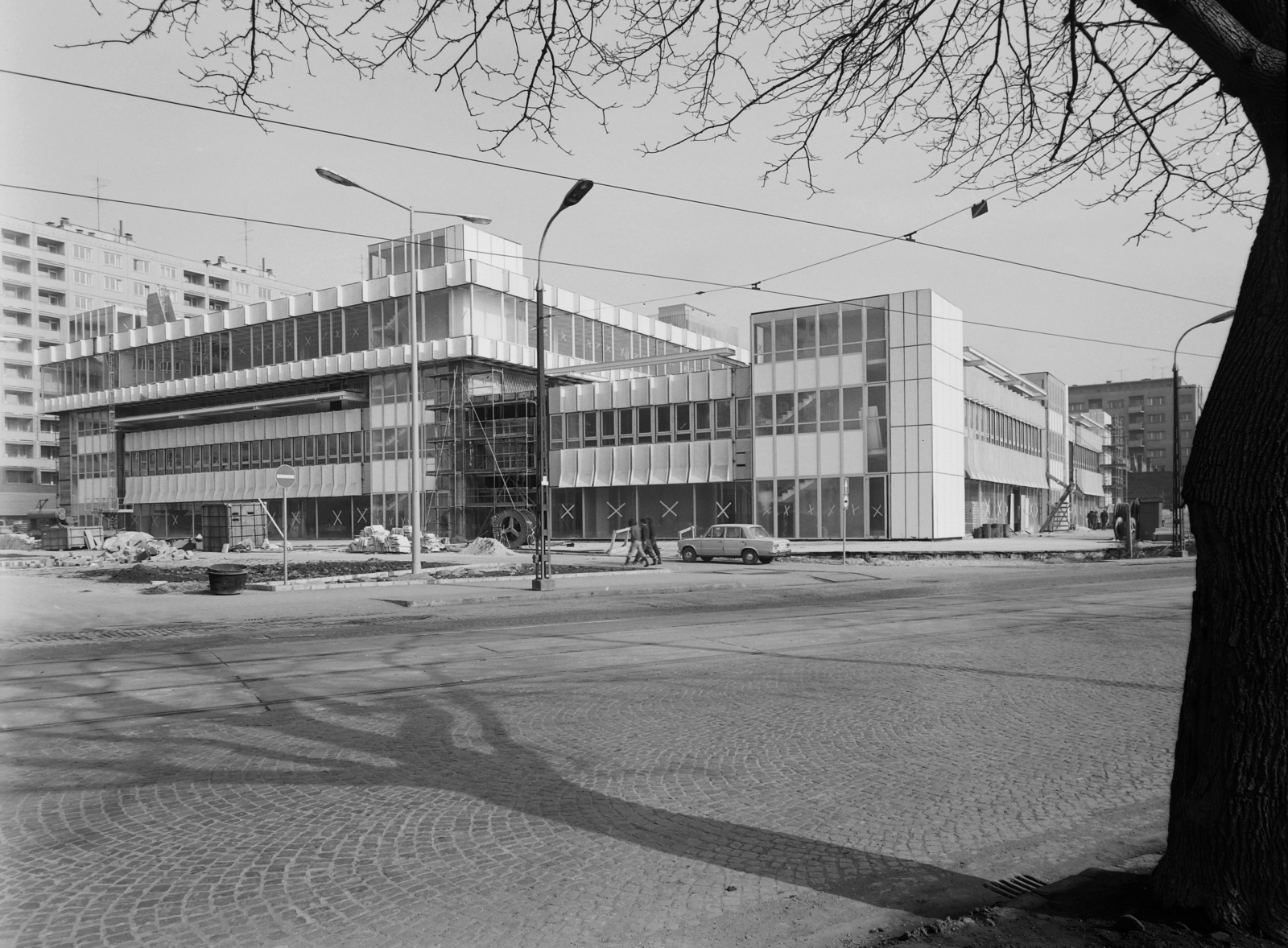
The Flórián department store in Óbuda before its handover, in 1976 (Source: Fortepan/No.: 84837)
Construction began in 1973. However, even that summer, the contractors encountered a serious obstacle: Roman ruins were discovered during the excavation of the foundations. It turned out that the command building of the former legionary camp was in this area, and, among other things, the remains of the ornamental gate and former residential houses were found.
On 19 November 1973, Magyar Hírlap wrote about the ruins:
"The discovery of Roman ruins during the excavation made the work more difficult: the building had to be redesigned, but the shopping centre will hopefully still be completed in this five-year plan."
Although the construction of the store was held back by the unearthed Roman remains, it was not prevented. Despite the protests of archaeologists, the ruins had to be destroyed: they were demolished, some of their elements were blown up. Three small parts of the former decorative gate have survived, placed inside the shopping centre building.
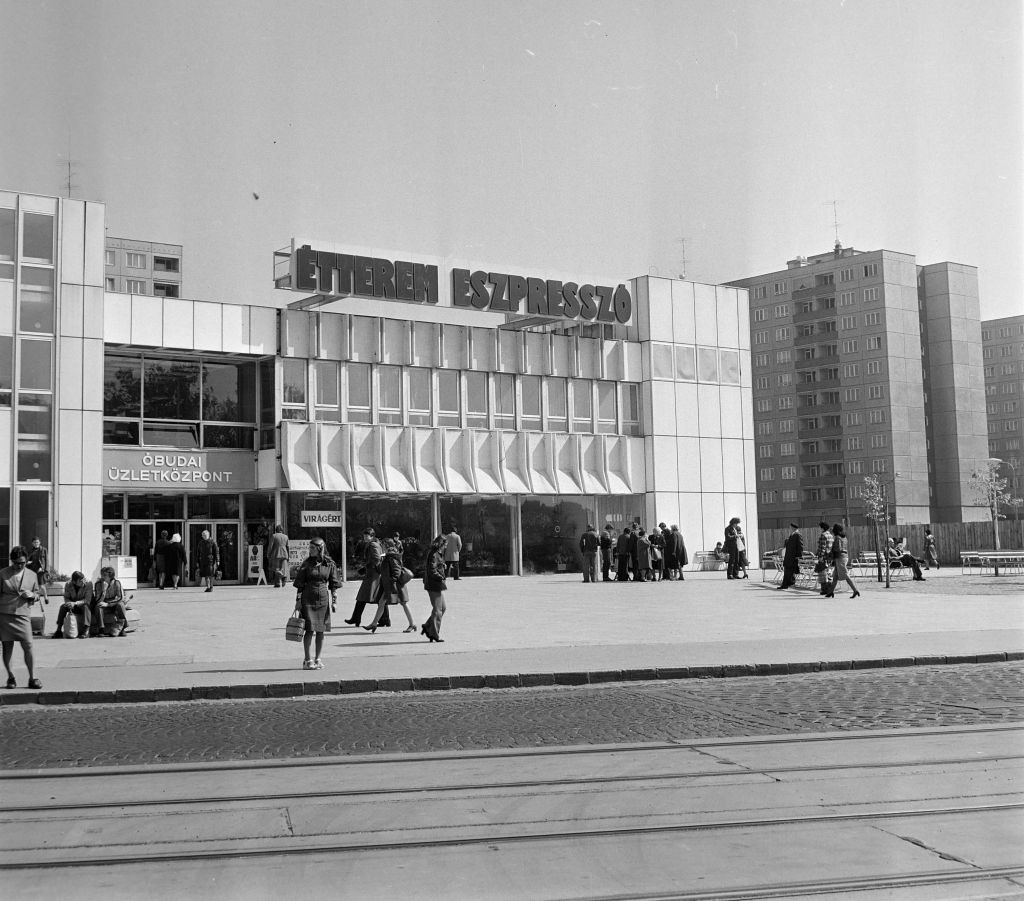 The department store built on Flórián Square was the first real shopping centre in Hungary (Source: Fortepan/No.: 69912)
The department store built on Flórián Square was the first real shopping centre in Hungary (Source: Fortepan/No.: 69912)
Construction was completed by 1976, the total investment cost was 440 million HUF. Several ideas were born to name the store, Óbuda, the Danube, and Juliet also came up, which would have referred to the Roman era, as Juliet is a name of Roman origin. However, the much more imaginative “Óbudai Centrum Department Store” was chosen instead, although, in 1976, it was also mentioned as the Flórián shopping centre. This name was “stuck” on the new facility because it stands on Flórián Square. Its official name today - at least according to the operator's website - is "Flórián Square Shopping Centre".
Before the handover of the new store on 28 June 1976, the Esti Hírlap wrote:
“The solemn handover is not only a big event in the trade of Óbuda and the capital. When the store’s gates open, the plan for the new district centre will also materialize. Óbuda gets a store for the first time - the big construction pays off for the trade for the first time. The department store will be a shopping centre for the whole of North Buda and even the area. They could hardly have found a better place than Flórián Square. In the line of ancient roads, the Hungária Boulevard, Vörösvári Road, and the north-south main road intersect here. Later, the suburban railway (HÉV - helyiérdekű vasút) will go underground around here.”
Flórián was novel in that it was the centre of smaller or larger stores, rather than a single department store with different departments according to each part of commerce. Today, this is natural, as it is in every shopping centre or complex. The Flórián also brought something new in that it had a large car park, so it was easily accessible by all means of transport.
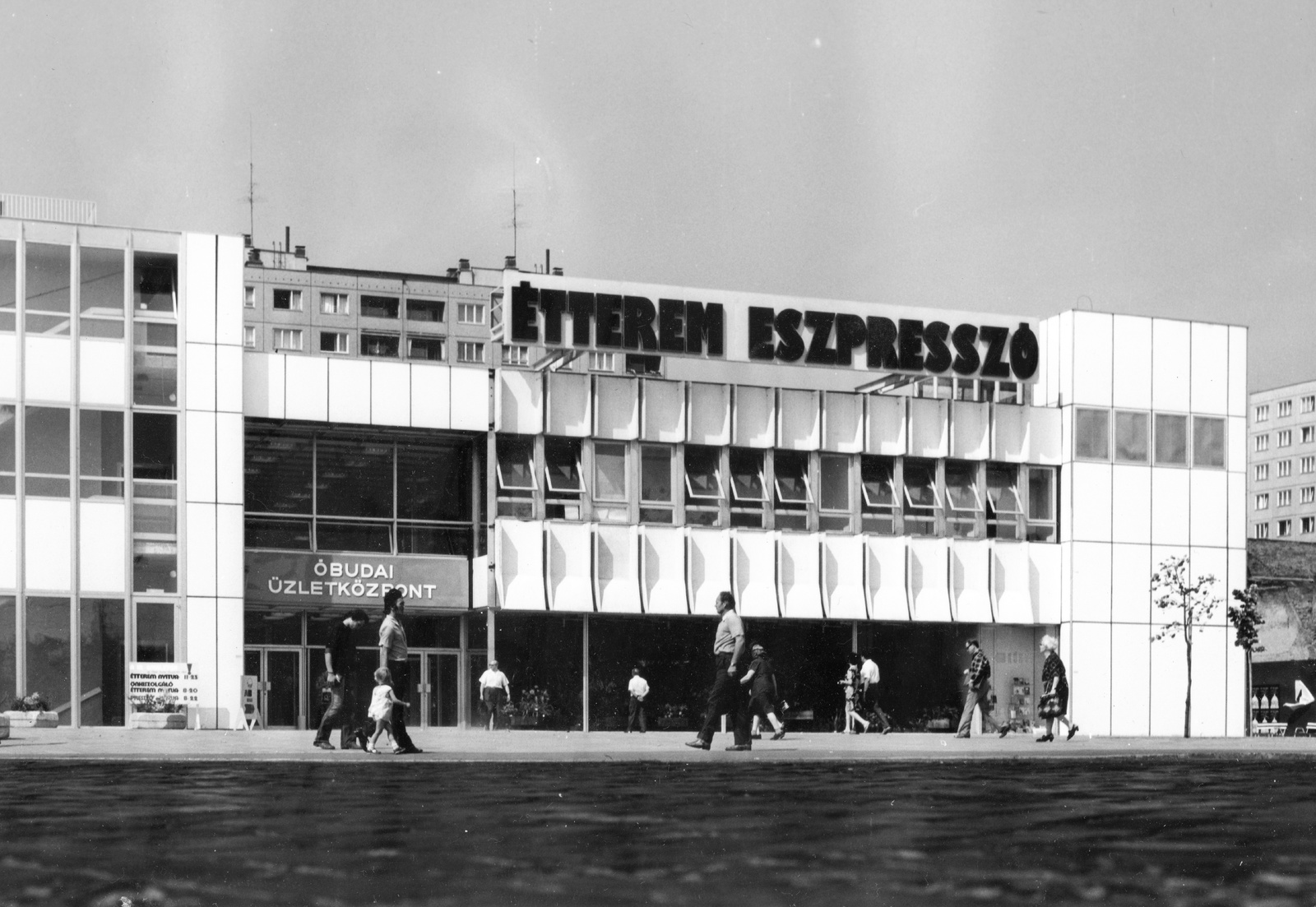
There were many variations for the name, but the final one was neither Juliet nor Danube (Source: Fortepan/No.: 69881)
A tunnel was built to load the department store, from which 15 freight elevators serve the shops. In the first years, the large store chains of that time, i.e., Aranypók, Centrum Department Store, Keravill, Röltex or Vasedény, opened stores here.
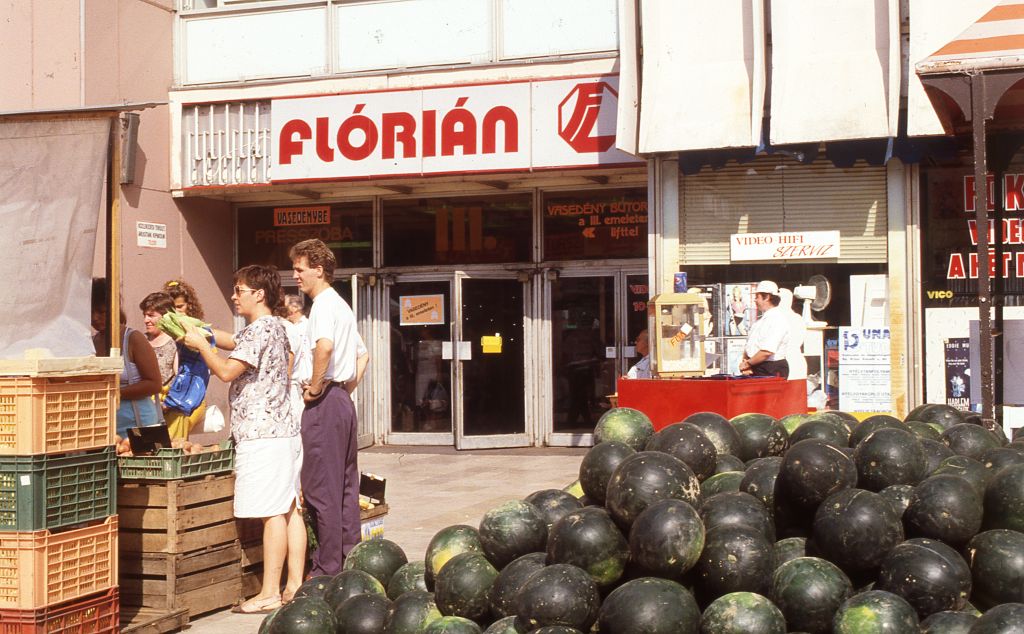
Greengrocer's before "Flórián", in 1989 (Source: Fortepan/No.: 152950)
Flórián was one of the most important shopping centres in Budapest during socialism, in fact, the first real shopping centre that was not swept away by the change of regime. The shopping centre remained the property of the Budapest Municipality, is operated by the Budapest Municipality Hall and Market Directorate and was renovated between 2010-2012. 50 stores are operating here today.
Cover photo: The Flórián Square shopping centre opened in 1976 (Source: Fortepan/No.: 69912)

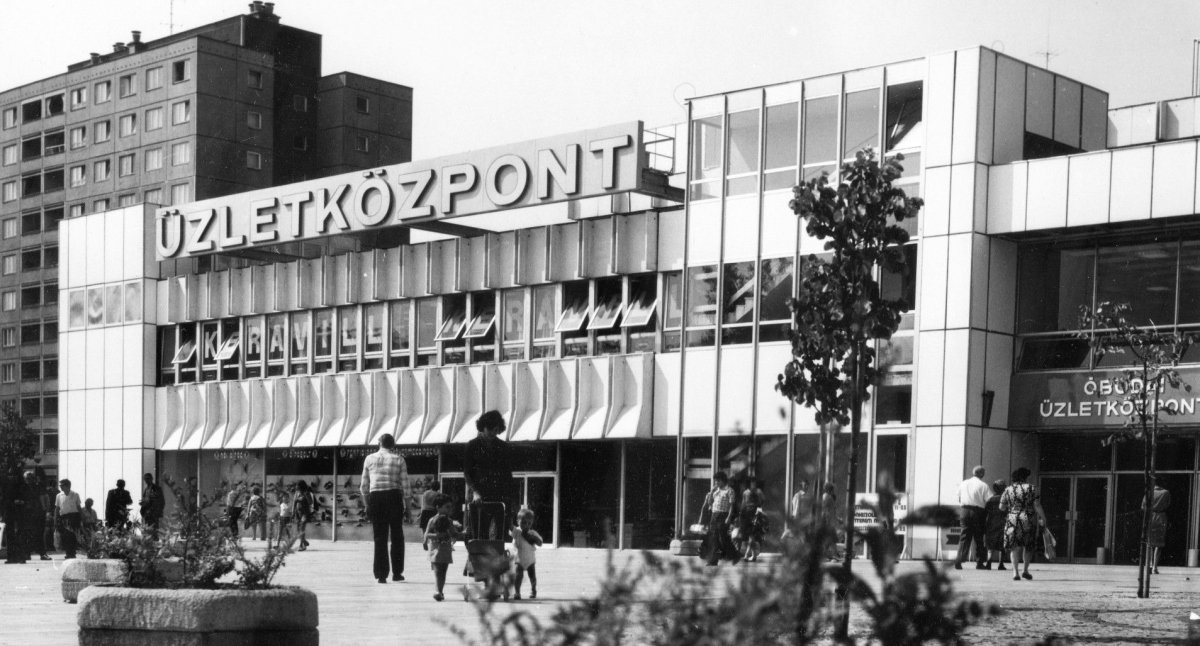


































Hozzászólások
Log in or register to comment!
Login Registration